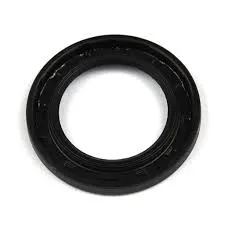8 月 . 18, 2024 03:26 Back to list
Choosing the Right Gasket for Oil Tank Applications and Maintenance Tips
Understanding Oil Tank Gaskets Importance and Maintenance
Oil tank gaskets play a critical role in ensuring the integrity and efficiency of various oil storage and processing systems. These seals are essential components that prevent leaks and maintain pressure within oil tanks, pipelines, and other related equipment. Given the potential environmental and economic implications of oil leaks, understanding the function, materials, and maintenance of oil tank gaskets is crucial for operators and environmental safety professionals.
The Role of Oil Tank Gaskets
Gaskets are designed to create a tight seal between two or more surfaces to prevent the escape of liquids or gases. In oil tanks, gaskets are commonly used in flanged joints, access covers, and other connections where oil might escape. A well-functioning gasket prevents leaks that could lead to hazardous spills, environmental contamination, and significant financial losses due to oil wastage.
Additionally, gaskets help maintain the internal pressure of oil tanks. Fluctuations in temperature and pressure can cause the tank to expand or contract. A properly fitted and maintained gasket will accommodate these changes, ensuring a reliable seal at all times.
Materials Used in Oil Tank Gaskets
Gaskets can be made from a variety of materials, each suitable for different applications based on the properties of the oil and the operational conditions. Common materials include
1. Nitrile Rubber Known for its excellent resistance to oil and fuel, nitrile rubber gaskets are commonly used in various oil tank applications. They can withstand high temperatures and have good mechanical stability.
2. PTFE (Teflon) Teflon gaskets are highly resistant to chemicals, including various oils. They can handle extreme temperatures and provide a low-friction surface, making them ideal for applications where ease of assembly is important.
3. Cork Cork gaskets are often used in older installations, offering a good seal in low-pressure applications. They may not be as resistant to harsh chemicals as synthetic materials but are often used because they are economical and effective for certain types of oil.
oil tank gasket

4. Metal Gaskets For high-pressure and high-temperature applications, metal gaskets, such as those made from stainless steel or copper, may be used. These gaskets provide outstanding sealing capabilities but require careful installation to avoid leaks.
Maintenance and Inspection
Regular maintenance and inspection of oil tank gaskets are crucial to ensure their reliability. Here are a few steps to help maintain gasket integrity
- Routine Inspections Regularly inspect gaskets for signs of wear, cracks, or deformation. Catching issues early can prevent leaks from developing.
- Proper Installation Ensure that gaskets are installed according to manufacturer specifications. Incorrect installations can lead to premature failure.
- Environmental Considerations Be aware of the environmental conditions the gaskets are exposed to. High temperatures, chemical exposure, and pressure variations can affect gasket performance.
- Replacement Protocols Establish a routine replacement schedule for gaskets, particularly in critical applications. Even high-quality gaskets have a finite lifespan.
- Leak Testing Implement leak detection methods to quickly identify failures. This can include visual inspections or the use of electronic leak detection systems.
Conclusion
Oil tank gaskets are essential for maintaining the integrity of oil storage and processing systems. Choosing the right material, ensuring proper installation, and conducting routine maintenance are key steps in preventing leaks and maintaining operational efficiency. By understanding the critical role of these components, operators can not only protect their investments but also contribute to environmental safety and sustainability in the oil industry.